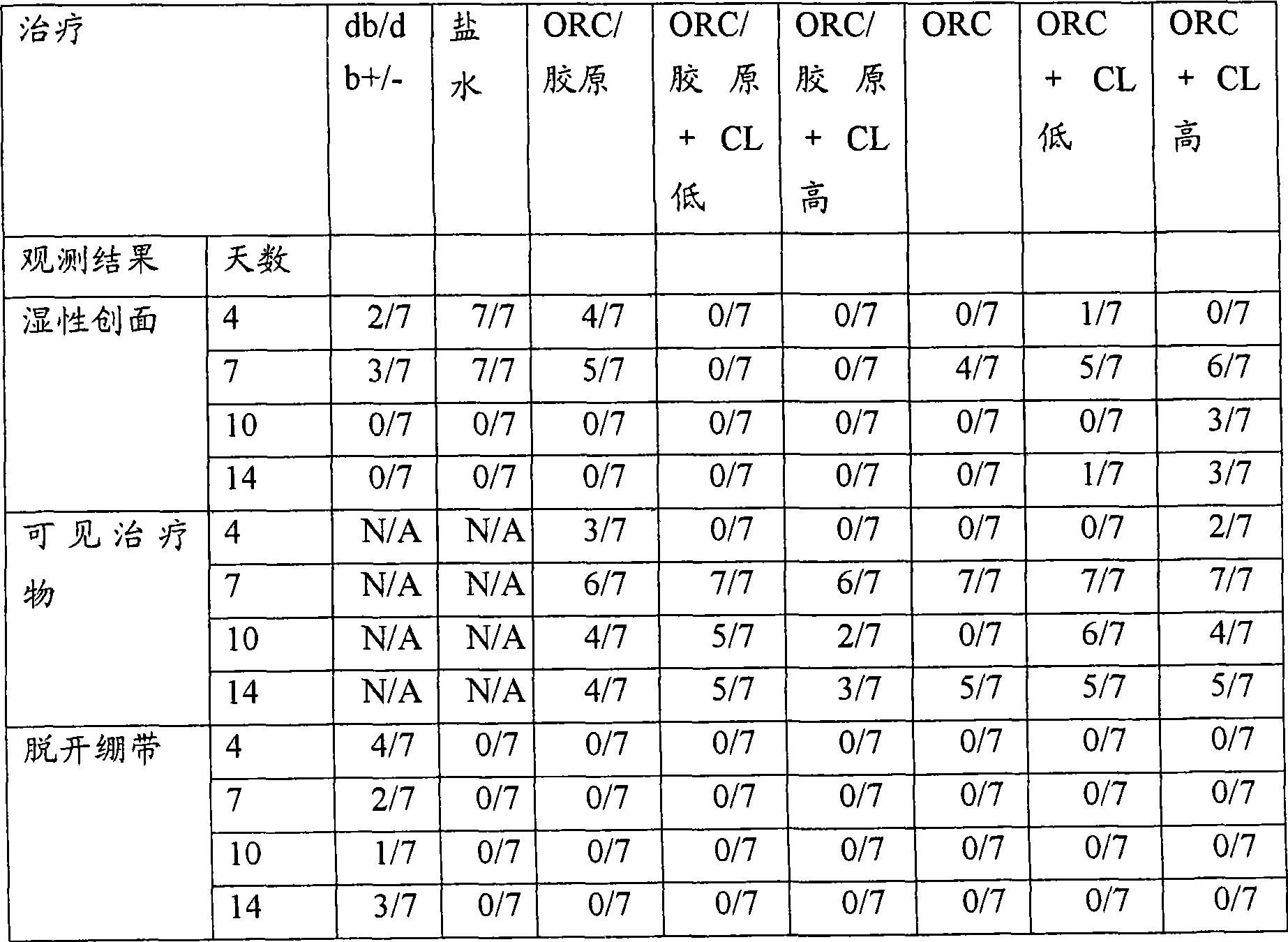Soft tissue repair and regeneration using stem cell products
A stem cell and soft tissue technology, applied in mammalian cell biology and cell culture, which can solve problems such as limited success
- Summary
- Abstract
- Description
- Claims
- Application Information
AI Technical Summary
Problems solved by technology
Method used
Image
Examples
Embodiment 1
[0207] Obtain cells from postpartum tissue
[0208] In this study, cell populations from placental and umbilical tissue were obtained. Obtain postpartum umbilicus and placenta at birth at full gestation or preterm. Cells were harvested from 5 independent umbilical and placental tissue donors. Different cell isolation methods were tested for their ability to generate 1) cells with the potential to differentiate into cells with different phenotypes, or 2) cells with the potential to provide key trophic factors available to other cells and tissues.
[0209] Methods and Materials
[0210] Umbilical cell derivation. Umbilical cords were obtained from Disease Research Exchange International (NDRI, Philadelphia, PA). Tissues were obtained after normal delivery. The cell separation protocol was performed aseptically under a laminar flow hood. To remove blood and debris, phosphate-buffered saline (PBS) was used in the presence of antifungals and antibiotics (100 units / ml penicill...
Embodiment 2
[0242] Production of lyophilized stem cell lysates
[0243]The aim of this study was to provide a method for the production of lyophilized stem cell lysates. This method consistently allows protein harvesting from lysed stem cells. The amount of total protein (57.53±38.69 pg / cell) correlated with the hUTC harvest density (R--Sq(adj)=71.5%). The hMSC lysate yielded 107.29 pg total protein / cell. The growth factor bFGF was present in lyophilized hUTC lysates from 6 independent production batches at an average of 3.09 ± 1.06 pg / μg total protein. SDS-PAGE analysis of hUTC lysates showed that the band pattern of the protein was consistent between independent production batches, before and after lyophilization, and lyophilization into synthetic biomaterials. The present method allows reproducible production of lyophilized material containing growth factors for tissue regeneration.
[0244] Materials and methods
[0245] Cell growth and harvesting. hUTC at 5,000 cells / cm 2 Inoc...
Embodiment 3
[0281] Analysis of factors present in cell lysates by multiplex ELISA assay
[0282] Materials and methods
[0283] Preparation of cell lysates. Approximately 25 million passage 11 human umbilical cord-derived cells (hUTC) were seeded into gelatin-coated T225 flasks. Because this number of cells was necessary to complete the study, for trypsinization, the flask was split into two parts, which were combined to make cell lysates. Cells were in the range of approximately 70-95% confluency. Flasks were trypsinized with 0.05% trypsin / EDTA for 5 minutes until cells began to float from the dish. Trypsinization was inactivated using Dulbecco's Modified Eagle Growth Medium containing 15% serum. Cells were pelleted in growth medium and then resuspended in a total volume of 40 ml PBS. Cells were washed 3 times with PBS to remove residual FBS from the growth medium. This was done by centrifuging the cells at 1.5 RPM for 5 minutes and then resuspending the cells in 40 ml PBS until 3 ...
PUM
 Login to View More
Login to View More Abstract
Description
Claims
Application Information
 Login to View More
Login to View More - R&D
- Intellectual Property
- Life Sciences
- Materials
- Tech Scout
- Unparalleled Data Quality
- Higher Quality Content
- 60% Fewer Hallucinations
Browse by: Latest US Patents, China's latest patents, Technical Efficacy Thesaurus, Application Domain, Technology Topic, Popular Technical Reports.
© 2025 PatSnap. All rights reserved.Legal|Privacy policy|Modern Slavery Act Transparency Statement|Sitemap|About US| Contact US: help@patsnap.com



